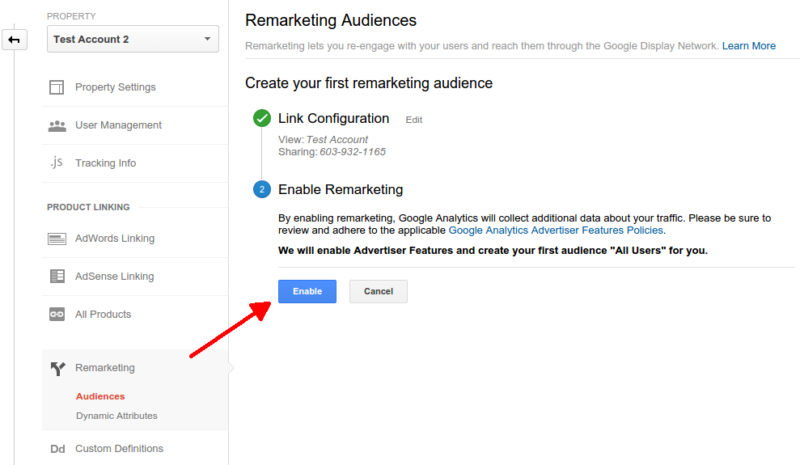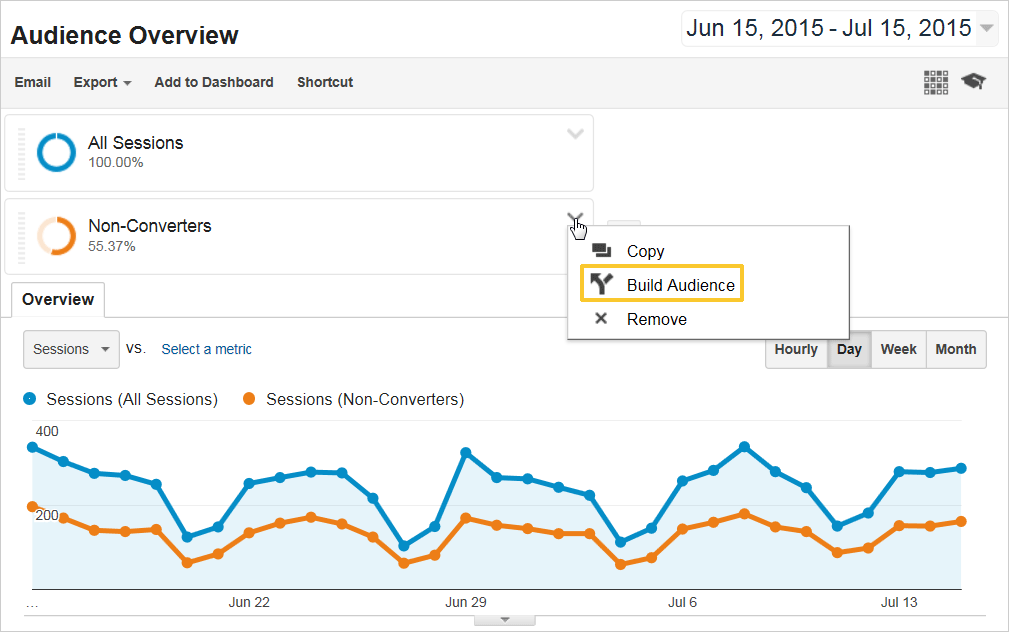Effective Techniques for Remarketing in Google Analytics
In the realm of digital marketing, the world of remarketing in Google Analytics stands as a critical tool for companies intending to boost their online presence and conversion rates. With critical target market segmentation, customized remarketing checklists, and appealing ad creatives, organizations can craft personalized projects that reverberate with their target market. Nevertheless, real success lies in the capacity to constantly improve and enhance these approaches based upon efficiency metrics and information insights. By discovering the subtleties of vibrant remarketing and leveraging sophisticated monitoring devices, businesses can open the complete potential of their remarketing efforts, leading to increased brand name presence and client involvement.
Target Market Division
Making use of audience segmentation is an essential method in optimizing the efficiency of remarketing projects within Google Analytics. By splitting your audience right into distinct groups based on their habits, demographics, or passions, you can tailor your advertising and marketing messages to be much more engaging and pertinent. This method permits you to supply personalized ads to particular sectors, increasing the chance of conversion.

In addition, audience segmentation helps you understand the varying requirements and preferences of different client groups, allowing you to craft more engaging advertisement creatives and deals. This targeted method not only boosts the efficiency of your remarketing efforts yet likewise enhances general project efficiency.
Establishing Up Remarketing Listings
To successfully apply remarketing approaches in Google Analytics, the preliminary step entails producing targeted remarketing lists based upon details target market interactions. Establishing remarketing lists enables marketers to segment their internet site visitors into various classifications based upon their behavior, such as web pages seen, items looked for, or activities handled the site. By specifying these sections, online marketers can then create personalized and appropriate advertisements that target these specific groups, increasing the chance of conversion.
Remarketing checklists can be established up utilizing numerous standards such as page brows through, duration of browse through, certain goal completions, and even particular events triggered on the internet site. This degree of modification makes it possible for marketing experts to customize their ads to match the passions and choices of each segmented target market, resulting in greater engagement and conversion prices.
Furthermore, remarketing lists can likewise be developed based upon data imported from other resources like CRM systems, permitting a lot more accurate targeting. By establishing up these targeted remarketing lists, marketers can successfully get to out to prospective consumers who have currently revealed interest in their product and services, maximizing the impact of their remarketing campaigns.
Producing Engaging Advertisement Creatives
After segmenting website site visitors right into targeted remarketing lists based upon details audience interactions, the next vital step is to craft compelling advertisement creatives that reverberate with each fractional team's interests and investigate this site choices. The efficiency of remarketing campaigns heavily depends on the capability of these advertisement creatives to capture the attention of the target market and drive them to take the wanted activity.
To create compelling ad creatives, it is necessary to recognize the one-of-a-kind qualities of each fractional team (What Is “Remarketing” In Google Analytics?). Tailoring the messaging, visuals, and offers to line up with the interests and choices of the target market can dramatically increase the chances of conversion. Using dynamic advertisements that instantly change content based upon the customer's behavior can additionally boost the personalization of the ad experience

Surveillance Performance and Optimization
Efficient monitoring of project efficiency and consistent optimization are vital facets of effective remarketing techniques in Google Analytics. To make sure the efficiency of remarketing campaigns, marketing experts must consistently track key efficiency metrics such as click-through prices, conversion prices, and return on ad spend. By keeping track of these metrics, online marketers can gain valuable understandings right into the performance of their campaigns and identify areas for enhancement.
In Google Analytics, marketing experts can leverage tools like conversion monitoring and audience division to evaluate the performance of their remarketing campaigns. Conversion tracking enables marketing experts to track certain actions that customers take after clicking on a remarketing ad, giving important information find out this here on the efficiency of the campaign in driving desired outcomes. Target market segmentation, on the other hand, enables marketing professionals to separate their target market into various sectors based on numerous requirements such as demographics, actions, and interests, permitting even more targeted and customized remarketing initiatives.
Continuous optimization is necessary for optimizing the influence of remarketing campaigns. Marketing professionals should make use of A/B testing to explore various advertisement creatives, messaging, and targeting techniques to recognize one of the most efficient techniques. By regularly examining project efficiency information and making data-driven optimizations, marketing experts can ensure that their remarketing campaigns are attaining the desired outcomes and driving conversions successfully.
Leveraging Dynamic Remarketing
Using vibrant remarketing can dramatically boost why not look here the relevance and influence of targeted ads in Google Analytics. This sophisticated strategy permits advertisers to show individualized advertisements to users that have actually previously seen their web site or used their mobile app. By dynamically showing product and services that the individuals have revealed rate of interest in, vibrant remarketing assists to maintain the brand fresh in their minds and encourages them to return to finish a purchase.

In addition, vibrant remarketing projects can be automated and optimized in real-time based on performance data, guaranteeing that the ads stay pertinent and effective. By leveraging dynamic remarketing in Google Analytics, marketers can develop more impactful and targeted marketing projects that resonate with their target market and drive results.
Verdict
In final thought, efficient remarketing techniques in Google Analytics involve target market division, targeted remarketing listings, compelling advertisement creatives, performance monitoring, and vibrant remarketing. By concentrating on tailored advertisements, information evaluation, and continual optimization, organizations can increase conversion prices and drive engagement effectively. Leveraging devices like conversion tracking ensures that ads remain tailored and appropriate, leading to general success in remarketing efforts.
Via critical audience division, customized remarketing checklists, and interesting ad creatives, companies can craft customized campaigns that resonate with their target audience. Making use of vibrant ads that automatically readjust content based on the customer's habits can additionally improve the personalization of the advertisement experience.
Conversion tracking permits marketers to track particular actions that customers take after clicking on a remarketing advertisement, offering important information on the effectiveness of the campaign in driving wanted outcomes.Using vibrant remarketing can significantly boost the significance and effect of targeted advertisements in Google Analytics - What Is “Remarketing” In Google Analytics?.In verdict, effective remarketing approaches in Google Analytics involve target market segmentation, targeted remarketing listings, engaging ad creatives, efficiency monitoring, and dynamic remarketing